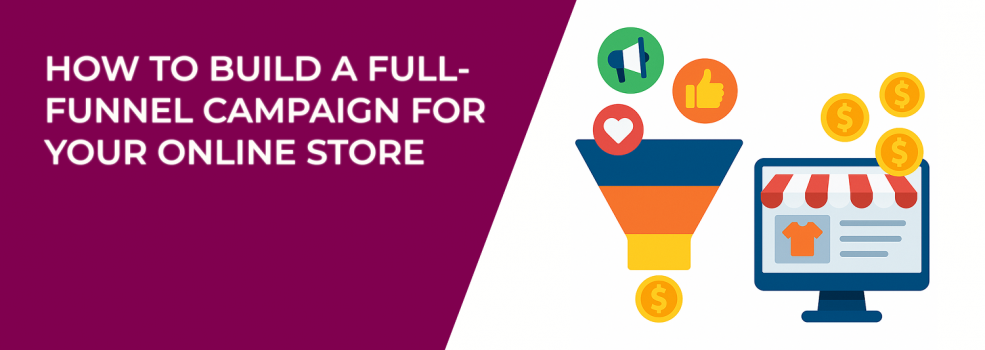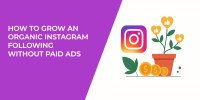Most e-commerce brands get stuck at the extremes. They either focus on generating reach — or race to drive conversions. But in between those two ends lies a critical area that too many marketers overlook: the mid-funnel.
This stage can quietly make or break your profitability.
When done well, mid-funnel campaigns transform passive interest into qualified consideration. When ignored, they allow warm leads to cool down and disappear — taking your ROAS with them.
Let’s explore why this stage matters, how to do it right, and how to measure success beyond surface-level clicks.
What Is Mid-Funnel Marketing, Really?
The middle of the funnel (MOFU) is where your audience already knows about your brand — but they haven’t made a decision yet. They might’ve visited your site, watched a video, or followed you on Instagram. Now they’re evaluating. Comparing. Thinking.
Mid-funnel content helps them move from interest to intent. It does this by:
-
Educating without overwhelming. Think product explainers, not tech specs.
-
Validating their curiosity. Through testimonials, customer stories, and real use cases.
-
Easing objections. Addressing fears like “Is this worth the price?” or “Will it work for me?”
-
Guiding decision-making. With content designed for people who are almost there.
If your funnel jumps from “Hey, we exist!” straight to “Buy now,” you’re skipping the relationship-building phase — and it shows in your metrics.
Mid-Funnel Campaigns: Why They’re a Growth Lever
Running awareness ads is expensive. And pushing too hard on conversions too soon can backfire. The mid-funnel exists to maximize the value of the audience you’ve already paid to attract.
It’s especially powerful when you need to:
-
Improve ROAS from existing traffic. Many brands don’t have a traffic problem — they have a trust problem.
-
Fix the gap between clicks and conversions. If users are bouncing after initial engagement, mid-funnel friction is the likely cause.
-
Educate users with high-consideration products. Think supplements, DTC tech, or premium fashion. They need more than one ad to commit.
This is the stage where you turn attention into understanding — and eventually, sales.
4 Mid-Funnel Strategies That Actually Move the Needle
1. Product Education Ads with Real-World Context
These are more than fancy feature lists. They show — not tell — why your product is valuable.
Try this:
-
Run carousel ads that break down one benefit per panel.
-
Use short-form video clips to highlight setup ease, key ingredients, or use cases.
-
Target users who watched at least 25% of your TOFU video with deeper-dive explainers.
Want your ads to convert? Make them answer real questions buyers are already asking.
2. Social Proof Retargeting
Mid-funnel is the best time to bring in customer voices. Testimonials and user reviews close the credibility gap.
How to build these campaigns:
-
Create testimonial videos and run them as retargeting ads to visitors who viewed product pages.
-
Include star ratings, customer quotes, and comparison charts.
-
Use dynamic creatives that pull in the exact product a user interacted with.
Need more guidance on structure? Explore the Facebook Ads Funnel Strategy article to see how warm audiences fit into your overall architecture.
3. Lead Magnets That Nurture (Not Just Capture)
Capturing an email is only step one. What you send after that matters even more.
Build a sequence like this:
-
Email 1: Tips for selecting the right product.
-
Email 2: Common objections, answered.
-
Email 3: Customer story showing real results.
-
Email 4: Optional incentive (bundle, free trial, soft offer).
Combining lead ads with email nurtures intent better than rushing the sale.
4. Segmented Warm Audience Campaigns
Not all warm leads are equal — and targeting them as one big group can kill results. You need segmentation based on behavior.
Use Facebook’s tools to separate:
-
Users who viewed products vs. those who watched a video
-
Visitors who bounced after 10 seconds vs. those who explored multiple pages
-
Past buyers who haven’t returned in 30 days
For advanced segmentation tactics, read Facebook Ad Targeting 101. It walks through how to match intent with message — especially in the mid-funnel zone.
How to Measure Mid-Funnel Success (Without Getting Lost in Vanity Metrics)
Mid-funnel is about momentum, not immediate sales. Here’s what to track:
-
Engagement on retargeting creatives. Comments, clicks, saves — not just views.
-
Email open and click-through rates. Are your nurture sequences doing real work?
-
Video watch-through rates. Are users staying past the 50% mark?
-
Return visitor rate. Are warm leads coming back?
-
Conversion assist metrics. Look at paths that include mid-funnel touchpoints.
Also: if your Facebook campaigns are stuck in the Learning Phase, improving mid-funnel segmentation can accelerate exit and unlock more stable results.
Final Thought: Mid-Funnel Marketing Is a Competitive Advantage
Most brands either over-invest in awareness or throw discounts at cold audiences hoping to score a few quick sales. That’s not a sustainable strategy.
Mid-funnel campaigns help you earn the sale by building understanding, trust, and value — step by step.
They don’t just fill the gap. They’re the part of the journey your competitors probably ignore. Which makes them your opportunity.

